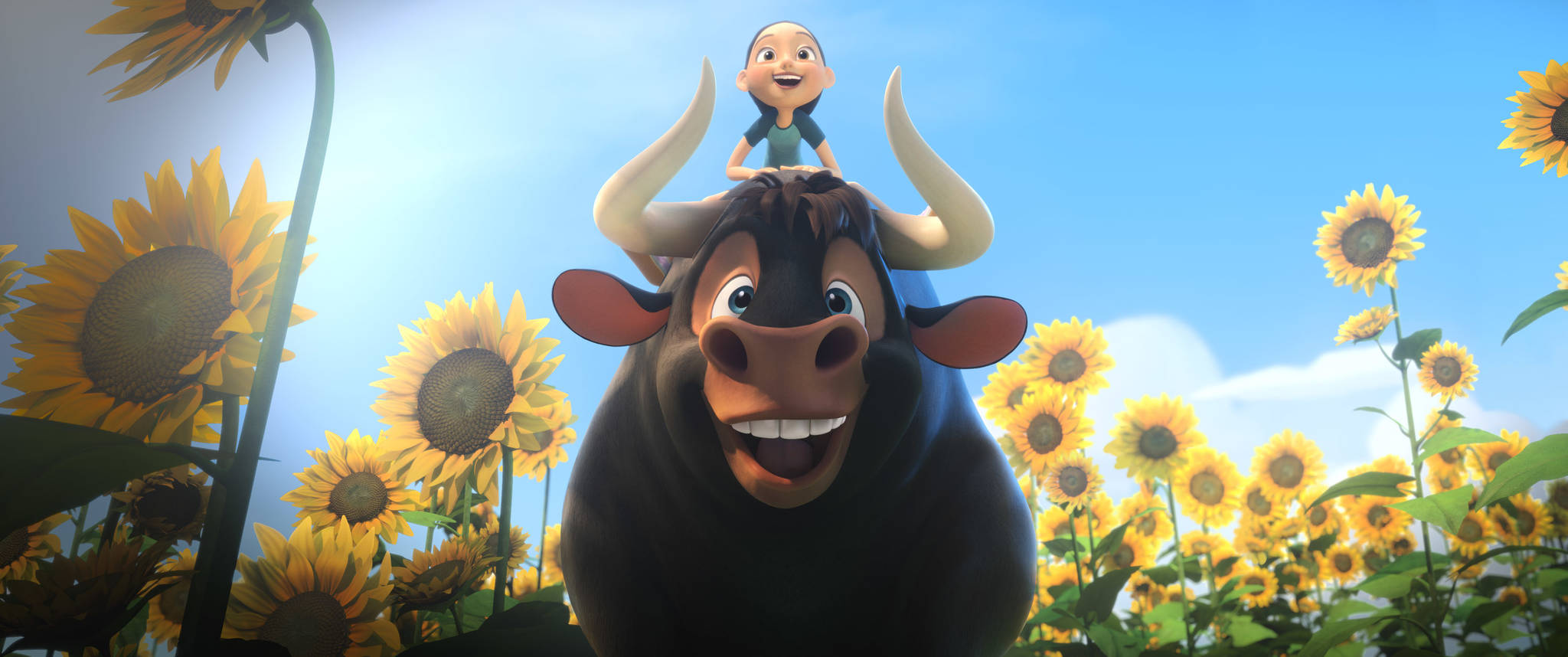“Ferdinand”
Twentieth Century Fox
1 hour, 48 minutes
It’s always a little dangerous to indulge in a large scale adaptation of something you loved as a child. I loved pixie sticks when I was little, but I seriously doubt that a three-course meal based around colorful powdered sugar would be in any way successful.
The same holds true for this week’s animated extravaganza “Ferdinand,” a big-screen retelling of the classic children’s book by Munro Leaf and Robert Lawson. The book is a simple, sweet story about a bull in Spain who would rather sit and smell the flowers than win glory in the bullfights. And that’s it. The story is as much about the beautiful black and white illustrations as it is about any kind of complicated plot.
“Ferdinand,” the movie, is about a bull that doesn’t want to fight, but it’s more about the ability to crassly market an entire toy shelf of unnecessary characters and fill out a ten-minute story with two hours of pointless and ill-advised adventures.
Granted, I understand the impulse. “Ferdinand” is a beloved tale, and who wouldn’t want more? This simply isn’t a property that benefits from expansion. “The Princess Bride,” many would argue, is a perfect movie. Would it benefit from being expanded into a trilogy of effects-heavy epic three hour films? Of course not. Which is where the crass part comes in. Art designed for children seems to be fair game for exploitation, as if the idea that you could make toys based on a story is justification enough.
The film chooses to expand the life of the titular bull, as if it’s important that we have a backstory that explains why he likes to sniff flowers instead of fight. As a calf at a bull-fighting academy, of sorts, Ferdinand loses his father and earns the ire of his more aggressive classmates. In terror, he flees, hopping a freight train and eventually falling in a ravine miles away, where he is found by a kindly farmer who takes him in.
The farmer’s daughter falls immediately in love with the gentle calf and they become the best of friends. Over the next couple of years, Ferdinand lives in bucolic bliss, as depicted by a clever pop-music montage. Sorry. That’s the opposite of clever.
Eventually, of course, Ferdinand grows extremely large and powerful, too powerful to go to the flower festival where the townsfolk would be unable to accept his destructive clumsiness, although it’s worth mentioning that the farmer is fine with the bull sleeping in bed with his daughter like he’s a golden retriever or something. But fine — this isn’t reality.
Naturally, after a series of mishaps, Ferdinand is shipped back to the bull fighting ranch where he was born. There he finds his old buddies, still angry, along with a few new characters to boot. Ferdinand is now the biggest and the strongest of the herd, so when the world’s greatest bullfighter comes calling, looking for the ultimate opponent to end his career on, our hero is the natural choice.
But, as mentioned, Ferdinand doesn’t like to fight. There’s a lot more plot, involving escapes, car chases, and slaughterhouses (wait — I thought this wasn’t reality. Yeesh.) but suffice it to say, it all ends in the ring.
Can you guess the outcome? At this point, nearly two hours in, you could have read the book ten times over. Actually, that’s a much better use of your time.
Before I come off sounding too grumpy, I should mention that both my 8- and 10-year-olds loved the film, as did their 81-year-old grandmother. That’s a pretty wide range for marketers to work with, so I guess maybe it’s just not a movie for me. There are some funny parts and I did find myself laughing out loud from time to time. I think I would have enjoyed the film more as isolated short scenes instead of an entire film that ends up mining one of my favorite books for parts.
One of my biggest problems with the film is that I kept comparing it to the last big Latino-themed film I saw, “Coco.” “Coco” is beautiful and sweet, but more importantly, feels entirely authentic. “Ferdinand” takes place in Spain, and surrounds a particularly Spanish activity, but feels no more authentically Spanish than does Taco Bell feel like Mexican food. I noticed a few hispanic names in the credits, but the leads were voiced by a white ex-wrestler, John Cene, a white ex-football player, Peyton Manning, as well a black guy, Anthony Anderson, an Italian guy, Bobby Cannavale, and a white comedienne, Kate McKinnon. I know this has always been the norm, but things are changing and right now “Ferdinand” feels like a throwback, and not in a good way.
Suffice it to say that I didn’t enjoy this film very much. Your kids will probably like the movie, but considering that there is so much quality kid’s entertainment out there, I see no need to throw this poorly made film into the mix. Go see “Coco” again.
Grade: C-
“Ferdinand” is rated PG for mild rude humor and mild cartoon violence. And be prepared to talk about why bulls that fail end up in the slaughterhouse. That’ll be fun.
Chris Jenness is an art teacher, freelance graphic designer, artist and movie buff who lives in Nikiski.

